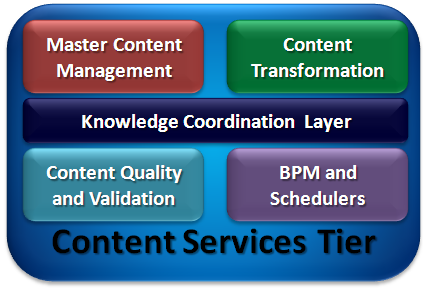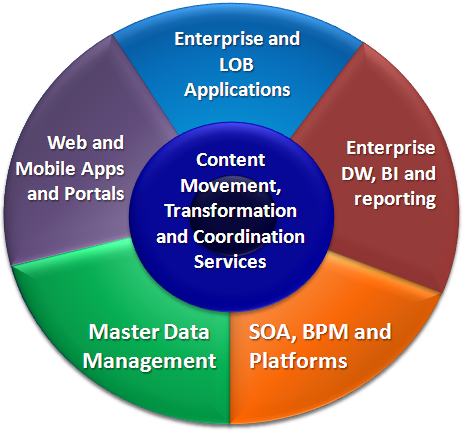18 Sep Context is King Indeed
 There are many important innovations adding context to business processes and data to make information access, collaboration and analysis more effective. I just read another great perspective on context in collaboration showing how taxonomies add value to teams of knowledge workers. Adding context is especially needed in moving toward the knowledge enterprise. I contend that context is the basis of all knowledge and understanding, and for knowledge workers, linking the structured and unstructured content that they need to perform their most important tasks requires context.
There are many important innovations adding context to business processes and data to make information access, collaboration and analysis more effective. I just read another great perspective on context in collaboration showing how taxonomies add value to teams of knowledge workers. Adding context is especially needed in moving toward the knowledge enterprise. I contend that context is the basis of all knowledge and understanding, and for knowledge workers, linking the structured and unstructured content that they need to perform their most important tasks requires context.
Are taxonomies enough? Many years ago, Roger Schank described semantic networks that may serve as a framework for inserting context. John Sowa brought the model a step further with conceptual graphs. The science has evolved to a technology called ontologies that go beyond taxonomies to tie content and process together in a contextual framework. I propose a new computing systems model for coordinating process and content using ontologies in a knowledge coordination layer.
| Understanding Context Cross-Reference |
|---|
| Click on these Links to other posts and glossary/bibliography references |
|
|
|
| Prior Post | Next Post |
| What is Inside Neurons? | Think Before You Speak? |
| Definitions | References |
| taxonomies knowledge | Schank 1972 |
| unstructured Semantic Web | Doug Lenat – Cycorp |
| Language Processing | Sowa 1984 |
Large companies, often described in IT jargon as “Enterprises” as in “Enterprise Systems Architecture,” are characterized by complex combinations of automated systems that process information. Information comes in many forms including structured databases and unstructured documents. There are even semi-structured things like narrative data in tables and bullets. These information sources serve collectively to feed the enterprise, its employees, contractors, partners and customers with the content they need to transform loose collections of ideas and data into actionable knowledge. Sadly, in most companies, the content assets are poorly coordinated and dissociated. What is needed is a set of content services that bind them together.
Pretty picture, but what does it mean? When we think about data services in a computing model, we understand that we need a set of things to insure the information is usable and accessible. These things may include:
- Structural Consistency,
- Referential integrity,
- Contract based routing,
- Declarative API,
- Data encapsulation,
- Data abstraction and
- Service metadata
As enterprises grow more dependent on unstructured content, the ability to navigate effectively within oceans of both structured and unstructured content grows more critical for maintaining competitive advantage. There are ways to link these services with semantic glue (words that serve as tags or markers) in which these tags are bound together in ontologies. I will talk about the how-to more in later blogs. At the foundation, we need to add knowledge services to the content services tier:
- Semantic indexing and
- Contextual cross-referencing.
Tags are at the core of the Semantic Web and Tags have become popular as a means of helping people find what they seek. One of the underlying premises, that the content is tagged by someone who understands the context already, is a little problematic because most content is tagged. Ontologies can be used in combination with Natural Language Processing techniques to infer the semantics and context of content. Furthermore, future apps can be built to leverage the natural understanding abilities, as services, without needing AI capabilities themselves.
At a conceptual level, the content services tier described above serves as the core of a knowledge enterprise architecture. Consider the discretely darkened core of this illustration of a knowledge enterprise:
In the center of this this enterprise model, ontological data ties semantic concepts, such as the words that represent business knowledge and Key Performance Indicators, to contexts and business processes. Future knowledge applications will become much more flexible as they use ontologies to associate people, processes and technologies with synonyms and related concepts, giving users a wider range of pathways to access and analyze the content they need. The promise of Big Data also grows exponentially as we use contextually indexed semantic concepts as the primary basis for search and retrieval instead of the narrow, brittle definitions of the past.
Context is King.
| Click below to look in each Understanding Context section |
|---|
| Intro | Context | 1 | Brains | 2 | Neurons | 3 | Neural Networks |
| 4 | Perception and Cognition | 5 | Fuzzy Logic | 6 | Language and Dialog | 7 | Cybernetic Models |
| 8 | Apps and Processes | 9 | The End of Code | Glossary | Bibliography |










